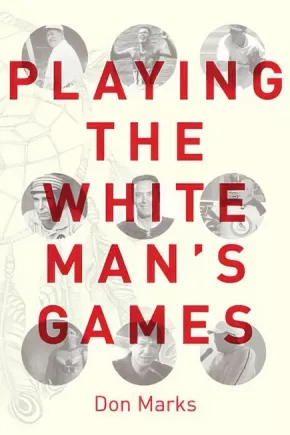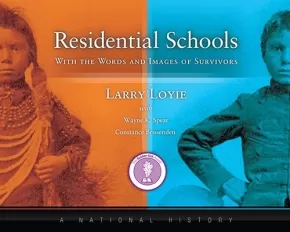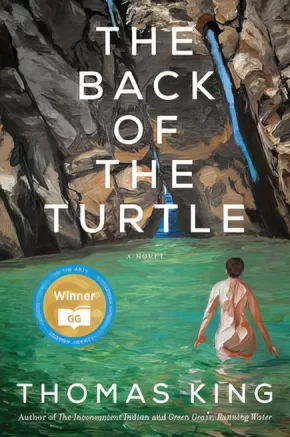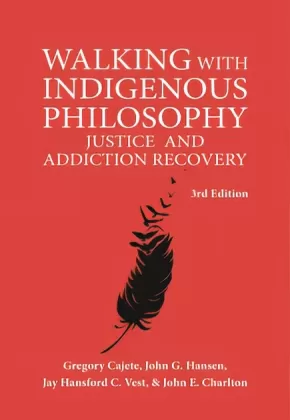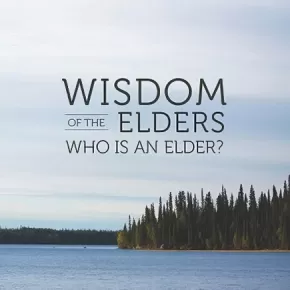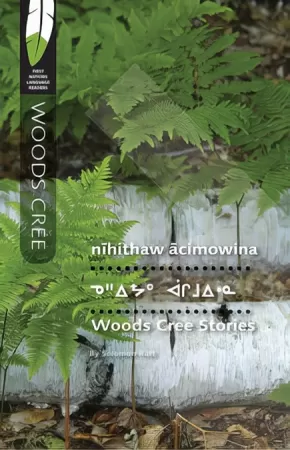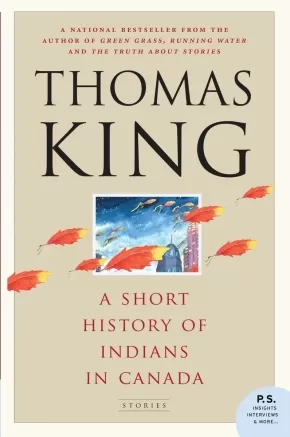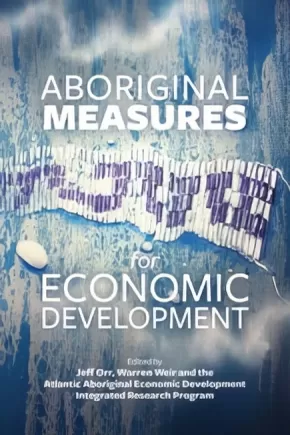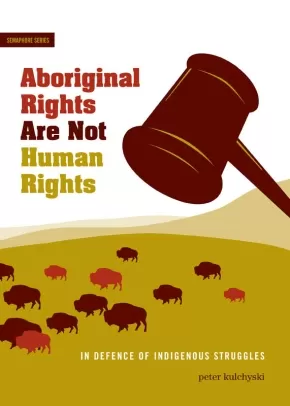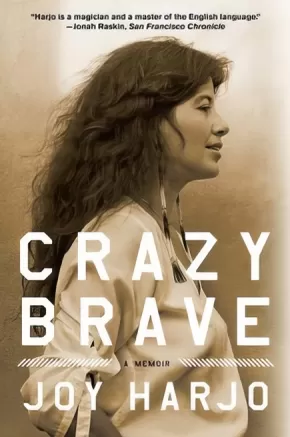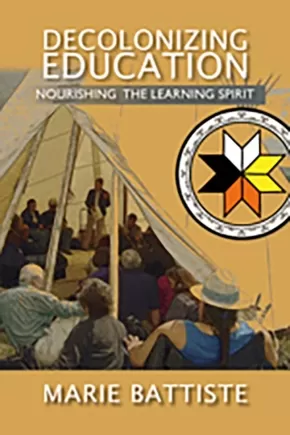Indigenous Studies
Synopsis:
Playing the White Man's Games tells the extraordinary tales of Native American athletes who overcame tremendous obstacles to dominate the NFL, CFL, PGA, Olympic Games, NHL and professional wrestling. From ABC's "Athlete of the Century" Jim Thorpe, whose track and field career began when he surpassed his college varsity high jump team in street shoes and climaxed with gold medals in the decathlon and pentathlon at the 1912 Olympic Games, before moving on to dominate NCAA and NFL football, major league baseball and 22 sports in all, including a national championship in ballroom dancing. To Billy Mills, who improved his best time by an unheard of 50 seconds to win the 10,000-metre Olympic race in "the greatest upset in Olympic history." And Notah Begay III, a product of public courses and Navajo code talkers who won four PGA tournaments in his first two years on the pro golf tour. Sometimes referred to as the "forgotten American", the fascinating stories of these colourful characters will make you recall Native American heroes with wonder and awe, not only for their exploits on the field of play, but for their efforts to preserve and enhance native history, culture and lifestyle with pride and dignity away from the competition.
Additional Information
272 pages | 6.00" x 9.00"
Synopsis:
Residential Schools, With the Words and Images of Survivors, A National History honours the survivors, the former students, who attended residential schools. Designed for the general reader this accessible, 112-page history offers a first-person perspective of the residential school system in Canada, as it shares the memories of more than 70 survivors from across Canada as well as 125 archival and contemporary images (65 black & white photographs, 51 colour, some never before published).
This essential volume written by award-winning author Larry Loyie (Cree), a survivor of St. Bernard Mission residential school in Grouard, AB, and co-authored by Constance Brissenden and Wayne K. Spear (Mohawk), reflects the ongoing commitment of this team to express the truths about residential school experiences and to honour the survivors whose voices are shared in this book.
Along with the voices, readers will be engaged by the evocative, archival photographs provided by the Shingwauk Residential Schools Centre with the assistance of curator Krista McCracken. The book begins with the moving introduction by Larry Loyie, and moves to seven chapters that explore the purpose of this school system; cultures and traditions; leaving home; life at school the half-day system; the dark side of the schools; friendship and laughter coping with a new life; changing world–the healing begins; and an afterword. A detailed, full colour map showing residential schools, timeline with key dates, glossary, and a helpful index (including names of survivors and schools) make this vital resource a must-have for secondary, college, and universities, libraries, and the general reader.
Reviews
"A broad and comprehensive review of the history of First Nations, Métis, and Inuit peoples in Canada told from the perspective of First Peoples in a very accessible way. Any educator, regardless of personal background or heritage, would find this timely resource very useful in any classroom." — Gary Fenn and Domenic Bellissimo, executive assistants, Ontario Secondary School Teachers’ Federation
"Written with a gentle hand, this book describes a history that few Canadians understand or even know about. From the first page, those in search of the truth are engaged in a journey of learning, as they come to understand the true battle of Aboriginal peoples to preserve their cultures and pride. This story is a true account of resiliency and human spirit." — Tracy Zweifel, executive director, Sagitawa Friendship Society, Alberta
Awards
- 2016 Winner of Golden Oak award in Ontario's Forest of Reading program
Educator Information
This must-have resource includes a detailed, full-colour map showing residential schools, a timeline with key dates, and a glossary.
Recommended for grades 7-12, but would still be useful for adults and college/university courses studying residential schools and Indigenous history.
This book has been evaluated and approved by ERAC (Educational Resource Acquisition Consortium, British Columbia).
Additional Information
112 pages | 10.43" x 8.26"
Synopsis:
Sanaaq is an intimate story of an Inuit family negotiating the changes brought into their community by the coming of the qallunaat, the white people, in the mid-nineteenth century. Composed in 48 episodes, it recounts the daily life of Sanaaq, a strong and outspoken young widow, her daughter Qumaq, and their small semi-nomadic community in northern Quebec. Here they live their lives hunting seal, repairing their kayak, and gathering mussels under blue sea ice before the tide comes in. These are ordinary extraordinary lives: marriages are made and unmade, children are born and named, violence appears in the form of a fearful husband or a hungry polar bear. Here the spirit world is alive and relations with non-humans are never taken lightly. And under it all, the growing intrusion of the qallunaat and the battle for souls between the Catholic and Anglican missionaries threatens to forever change the way of life of Sanaaq and her young family.
Caution: Contains some mature content.
Educator Information
“Sanaaq is an unpretentious collection of fictional vignettes depicting Inuit family life in the 1950s Canadian eastern arctic. The author wrote at the request of an anthropologist attempting to learn Inuktitut and seeking to understand the context of specific words and terms.
Additional Information
248 pages | 5.50" x 8.50"
Synopsis:
This is Thomas King’s first literary novel in fifteen years and follows on the success of the award-winning and bestselling The Inconvenient Indian and his beloved Green Grass, Running Water and Truth and Bright Water, both of which continue to be taught in Canadian schools and universities. Green Grass, Running Water is widely considered a contemporary Canadian classic.
In The Back of the Turtle, Gabriel returns to Smoke River, the reserve where his mother grew up and to which she returned with Gabriel’s sister. The reserve is deserted after an environmental disaster killed the population, including Gabriel’s family and the local wildlife. Gabriel, a brilliant scientist working for Domidion, created GreenSweep and indirectly led to the crisis. Now he has come to see the damage and to kill himself in the sea. But as he prepares to let the water take him, he sees a young girl in the waves. Plunging in, he saves her and soon is saving others. Who are these people with their long black hair and almond eyes who have fallen from the sky?
Filled with brilliant characters, trademark wit, wordplay and a thorough knowledge of native myth and storytelling, this novel is a masterpiece by one of our most important writers.
Reviews
“Gracefully written, this is a fable-like morality tale. With King’s trademark flashes of humour, irony and deadpan delivery, The Back of the Turtle is populated with wounded characters who are trying to heal in the wake of an environmental disaster.” — Toronto Star
“King’s writing is sharp, the characters are well-drawn, and his topic is suitably grave.” — National Post
"King deftly juxtaposes the varieties of Canadian experience, contrasting the shining city with diminishing coastal town, the lives of the uber-wealthy with those of aboriginal Canadians, whose lives seem to count for very little when there is a profit to be made. King uses his trademark blending of traditional aboriginal beliefs and stories with the Western literary canon to create a haunting narrative of life, death and the destruction of nature. Allusions abound, incorporated into the story with King's often absurdist wit, walking a fine line between humor and heartbreak. The result is both an intimate story of grief in the face of loved ones lost and a searing criticism of current apathy toward looming environmental disasters." - Publisher's Weekly
Educator Information
Grades 11-12 English First Peoples resource for the unit "You Want Me to Write a What?" - The Literary Essay.
Additional Information
528 pages | 5.31" x 8.00"
Compiled by Craig Charbonneau Fontaine, these stories by Elder Alexander Grisdale were first printed in the Winnipeg Free Press in the 1960s. The collection demonstrates the traditional narrative of Anishanabe storytelling, in written form, and illustrates how the land we know as Canada carries stories and experiences that predate European colonization.
Synopsis:
Dr. Gregory Cajete, Dr. John G. Hansen, Dr. Jay Hansford C. Vest, and Dr. John E. Charlton have expanded the breadth, depth and scope of Walking With Indigenous Philosophy: Justice and Addiction Recovery (3rd ed.) making it a multidisciplinary, international and cross-cultural examination of a restorative justice based approach, that at its heart draws upon the wisdom inherent within Indigenous cultures, in order to question hierarchical and heavily one-sided disease based understanding to addiction recovery.
This third edition continues to advocate a model of restorative justice, saturated throughout by an Indigenous philosophy of holism and healing through inclusion and education, when working with those upon the margins, in order to appreciate and honour the whole person.
Justice is understood as a concept that must be based upon, and within, the recognition of the other. It is from within this recognition of the other that accountability, as a healing endeavour, must find its grounding. The voices of Cree elders indigenous to northern Manitoba, Indigenous Justice Workers, two American Indians (Cajete and Vest), one First Nation (Hansen), one addiction counselling professional (Charlton) and both Indigenous and non-Indigenous people in recovery are heard.
Reviews
"Walking With Indigenous Philosophy: Justice and Addiction Recovery (3rd ed) is an accurate and introspective look at Indigenous peoples and addictions. This exemplary work recognizes storytelling, restorying, and the inherent value within healing through spiritual and cultural praxis that privileges Indigenous ways of knowing. The book challenges the existing paradigm and takes you through an alternative method of being. Great for a textbook and reference for Addictions workers." - Verna Billy Minnabarriet
"For those who teach Native Cultures or want to be better informed, this book is a valuable resource. Its Indigenous perspectives on addiction recovery would be hard to find elsewhere." - Wanda Teays, PhD
Additional Information
238 pages | 6.00" x 9.00" | 3rd Edition | Paperback
Synopsis:
The Haudenosaunee, more commonly known as the Iroquois or Six Nations, have been one of the most widely written-about Indigenous groups in Canada and the United States. But seldom have the voices emerging from the Haudenosaunee community been considered in order to understand its enduring intellectual traditions.
Rick Monture’s We Share Our Matters offers the first comprehensive portrait of how the Grand River Haudenosaunee of Southern Ontario have expressed their long struggle for sovereignty in Canada. Drawing from individuals as diverse as Joseph Brant, Pauline Johnson and Robbie Robertson, Monture illuminates a unique Haudenosaunee world view comprised of three distinct features: a spiritual belief about their role and responsibility to the earth; a firm understanding of their sovereign status as a confederacy of independent nations; and their responsibility to maintain those relations for future generations.
After more than two centuries of political struggle Haudenosaunee thought has avoided stagnant conservatism and continues to inspire ways to address current social and political realities.
Synopsis:
Elders are the keepers of First Nations traditional knowledge and from their wisdom we offer this short booklet. Wisdom of the Elders answers the question: Who is an Elder? It is meant to be used as a guide for First Nations educators to use when implementing a model involving Elders in the education process. Advice and guidance from Elders in First Nations territories in Manitoba are the key resources for this booklet.
Synopsis:
Humour is not only the best medicine; it is also an exceptionally useful teaching tool.
So often, it is through humour that the big lessons in life are learned--about responsibility, honour, hard work, and respect. Cree people are known for their wit, so the tales in Woods Cree Stories are filled with humour. The book includes nine stories--including Boys Get Lost, Foolishness, and Animals Become Friends--and a Woods Cree-to-English glossary.
All the stories are presented in Cree syllabics, Standard Roman Orthography, and English translation and can be enjoyed by those new to the language and more advanced learners.
Educator & Series Information
Woods Cree Stories is part of the First Nations Language Readers series. With a mix of traditional and new stories, each First Nations Language Reader introduces an Indigenous language and demonstrates how each language is used today. The University of Regina Press’s long-term goal is to publish all 60+ Indigenous languages of Canada.
Additional Information
138 pages | 5.50" x 8.50"
Synopsis:
Acclaimed author Thomas King is in fabulous, fantastical form in this bestselling short story collection. From the surreal migrations of the title story to the misadventures of Coyote in the modern world and the chaos of a baby's unexpected arrival by airmail, King's tales are deft, hilarious and provocative.
Reviews
"The stories in this volume cover a lot of ground. King touches on the history of displacement, racism and stereotyping, oppressive government policy, marriage and relationships, and Aboriginal-white relations, among other topics." - Dragonfly Consulting Services Canada
Educator Information
Grade 10/11 English First Peoples resource used in the unit The Trickster - A Recurring Presence.
Additional Information
256 pages | 5.31" x 8.00"
Synopsis:
This volume explores Indigenous measures of economic development in First Nations Atlantic Canadian communities that are of relevance for First Nations peoples. Many of the challenges faced by these communities and their local, regional and national leaders in advancing economic development relate to experiences of diverse and complex issues — most of which clash with federal policies that increasingly call for centralization, standardization and uniformity. This volume illustrates the key challenges in establishing and maintaining socially responsible economic development that is beneficial for Aboriginal communities.
Synopsis:
Aboriginal rights do not belong to the broader category of universal human rights because they are grounded in the particular practices of aboriginal people. So argues Peter Kulchyski in this provocative book from the front lines of indigenous people’s struggles to defend their culture from the ongoing conquest of their traditional lands. Kulchyski shows that some differences are more different than others, and he draws a border between bush culture and mall culture, between indigenous people’s mode of production and the totalizing push of state-led capitalism.
Aboriginal Rights Are Not Human Rights provides much needed conceptual and historical analysis of aboriginal and treaty rights in Canada, and offers concrete suggestions to transform the current policy paradigm into one that supports and invigorates indigenous cultures in a contemporary context.
Synopsis:
A “raw and honest” (Los Angeles Review of Books) memoir from the first Native American Poet Laureate of the United States.
In this transcendent memoir, grounded in tribal myth and ancestry, music and poetry, Joy Harjo details her journey to becoming a poet. Born in Oklahoma, the end place of the Trail of Tears, Harjo grew up learning to dodge an abusive stepfather by finding shelter in her imagination, a deep spiritual life, and connection with the natural world. Narrating the complexities of betrayal and love, Crazy Brave is a haunting, visionary memoir about family and the breaking apart necessary in finding a voice.
Additional Information
176 pages | 5.50" x 8.22" | Paperback
Synopsis:
Drawing upon a variety of academic sources as well as personal and professional experiences, Dr. Michell, a member of the Barren Lands First Nation, offers a book designed to assist educators in coming to understand the larger frameworks of Cree ontology (ways of seeing the world and one’s place in it), epistemology (ways of understanding knowledge), and methodologies (ways of teaching).
While Dr. Michell’s book is a specific example of Cree culture, from northern Saskatchewan, the message is most certainly transferable beyond the Barren Lands First Nation example, and as such, offers readers entry into thinking about how to make bridges between diverse ways of knowing that is applicable cross-culturally.
Reviews
"The book Cree Ways of Knowing and School Science provides a good personal description of Cree culture and how it can improve science teaching in the classroom for First Nations students. Drawing from his experience in Northern Saskatchewan, Dr. Michell illustrates the importance of hands-on experience for students and the need to relate what they are learning in the classroom to their culture. Most importantly, Dr. Michell promotes taking the students to the knowledge holders (the Elders) and to the natural teaching lab (the land), thus incorporating traditional knowledge in the teaching of science. Elders are an essential component in this endeavour. This book will be of interest to current and prospective teachers as well as to anyone interested in cross-cultural experiences and learning. This book provides a timely contribution to the question of how to improve educational outcomes for First Nations students, a critical issue for federal, provincial and First Nations governments." - Fidji Gendron, PhD
Educator Information
Table of Contents
Preface
1. Introduction
2. Nîhîthawâk Ithînîwak
3. Nîhîthawâk Ithînîwak and School Science: A Storied Reflection
4. Nîhîthâwatîsîwîn
5. The Concept of Indigenous Science
6. The Concept of Western Science
7. Assumptions in Western and Cree Ways of Knowing
8. Promising Practices: School Science in Cree Contexts
References
About the Author
Additional Information
88 pages | 7.00" x 10.50" | Paperback
Synopsis:
Drawing on treaties, international law, the work of other Indigenous scholars, and especially personal experiences, Marie Battiste documents the nature of Eurocentric models of education, and their devastating impacts on Indigenous knowledge. Chronicling the negative consequences of forced assimilation and the failure of current educational policies to bolster the social and economic conditions of Aboriginal populations, Battiste proposes a new model of education. She argues that the preservation of Aboriginal knowledge is an Aboriginal right and a right preserved by the many treaties with First Nations. Current educational policies must undergo substantive reform. Central to this process is the rejection of the racism inherent to colonial systems of education, and the repositioning of Indigenous humanities, sciences, and languages as vital fields of knowledge. Battiste suggests the urgency for this reform lies in the social, technological, and economic challenges facing society today, and the need for a revitalized knowledge system which incorporates both Indigenous and Eurocentric thinking. The new model she advocates is based on her experiences growing up in a Mi’kmaw community, and the decades she has spent as a teacher, activist, and university scholar.
Additional Information
223 pages | 6.00" x 9.00"

